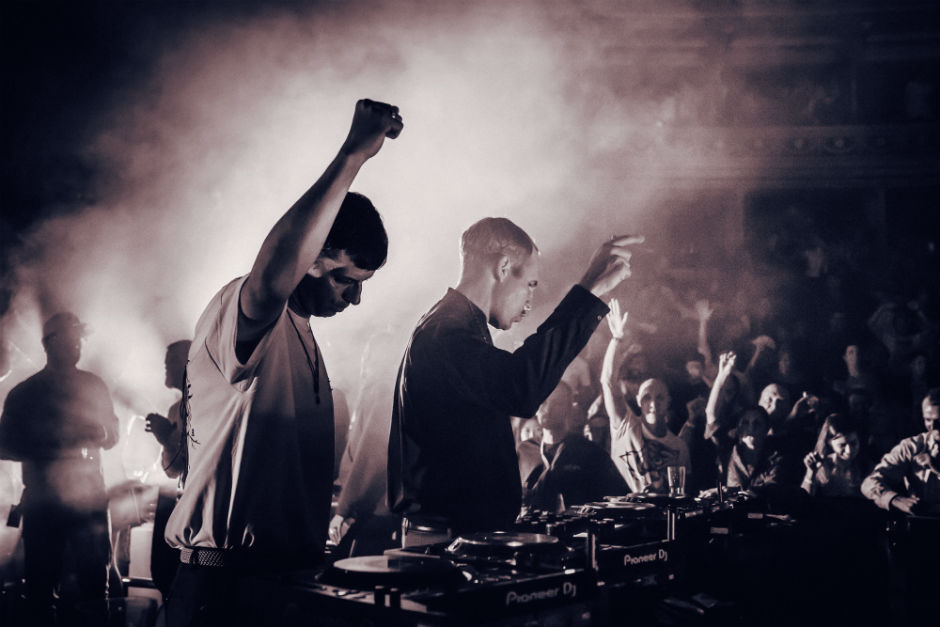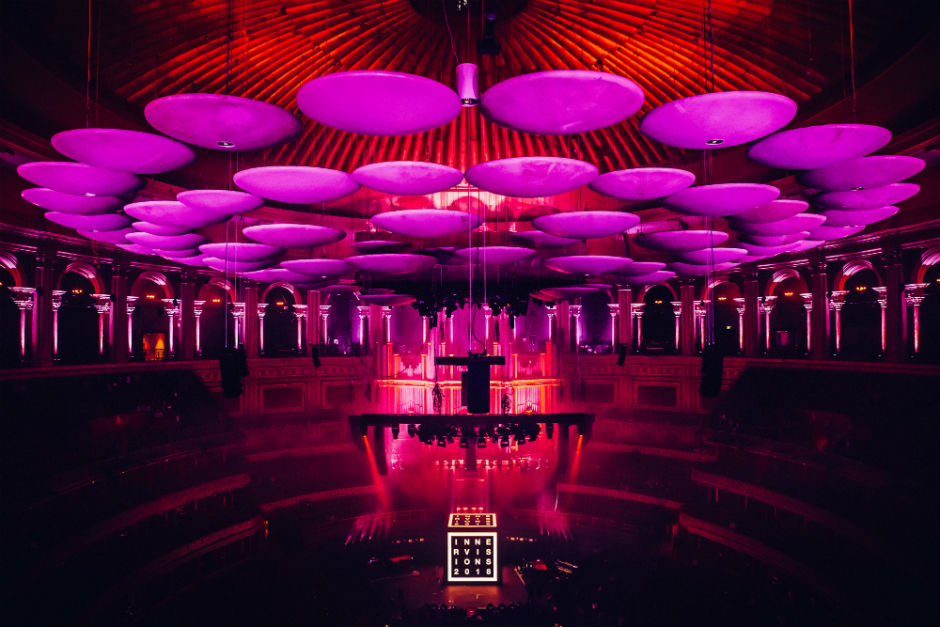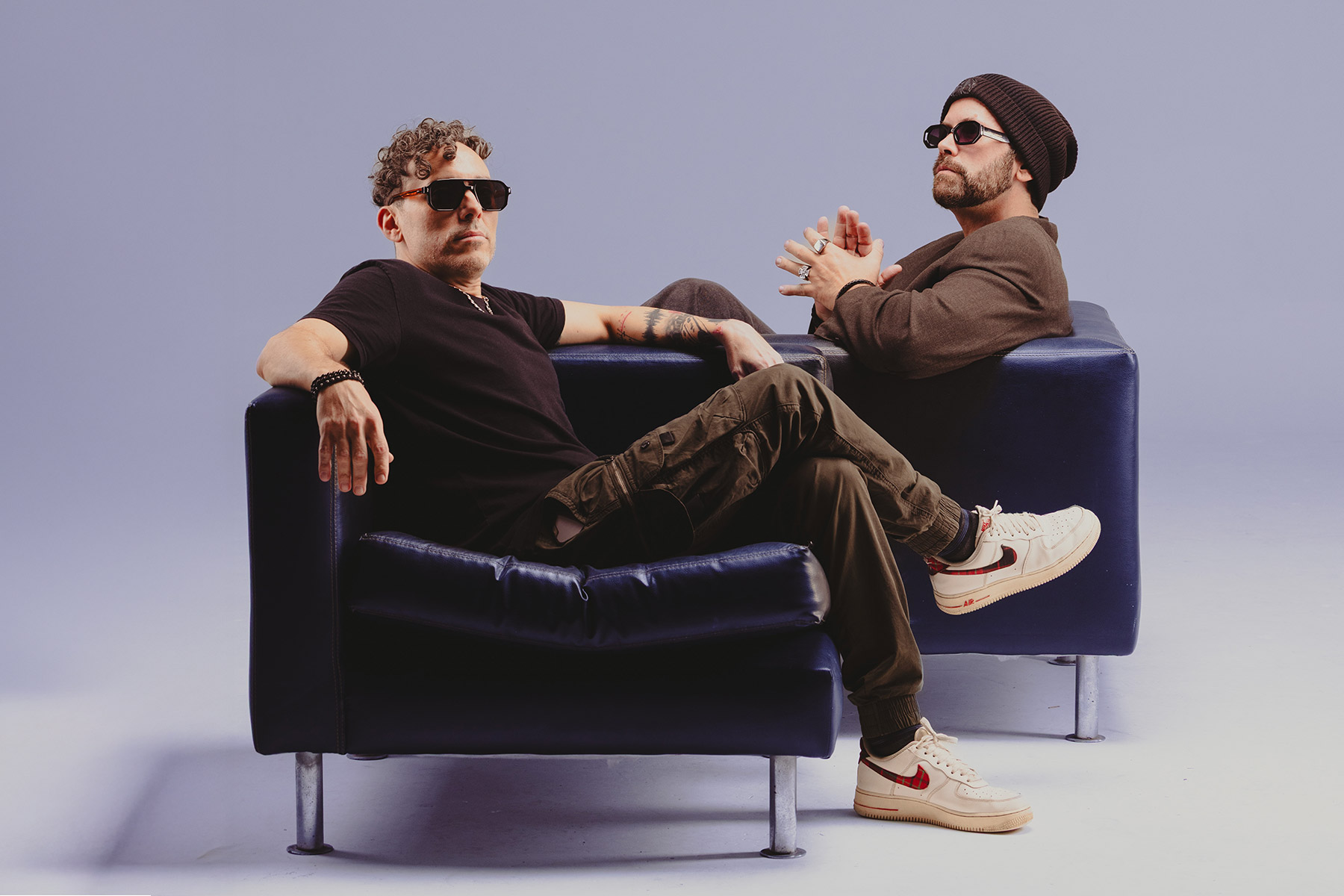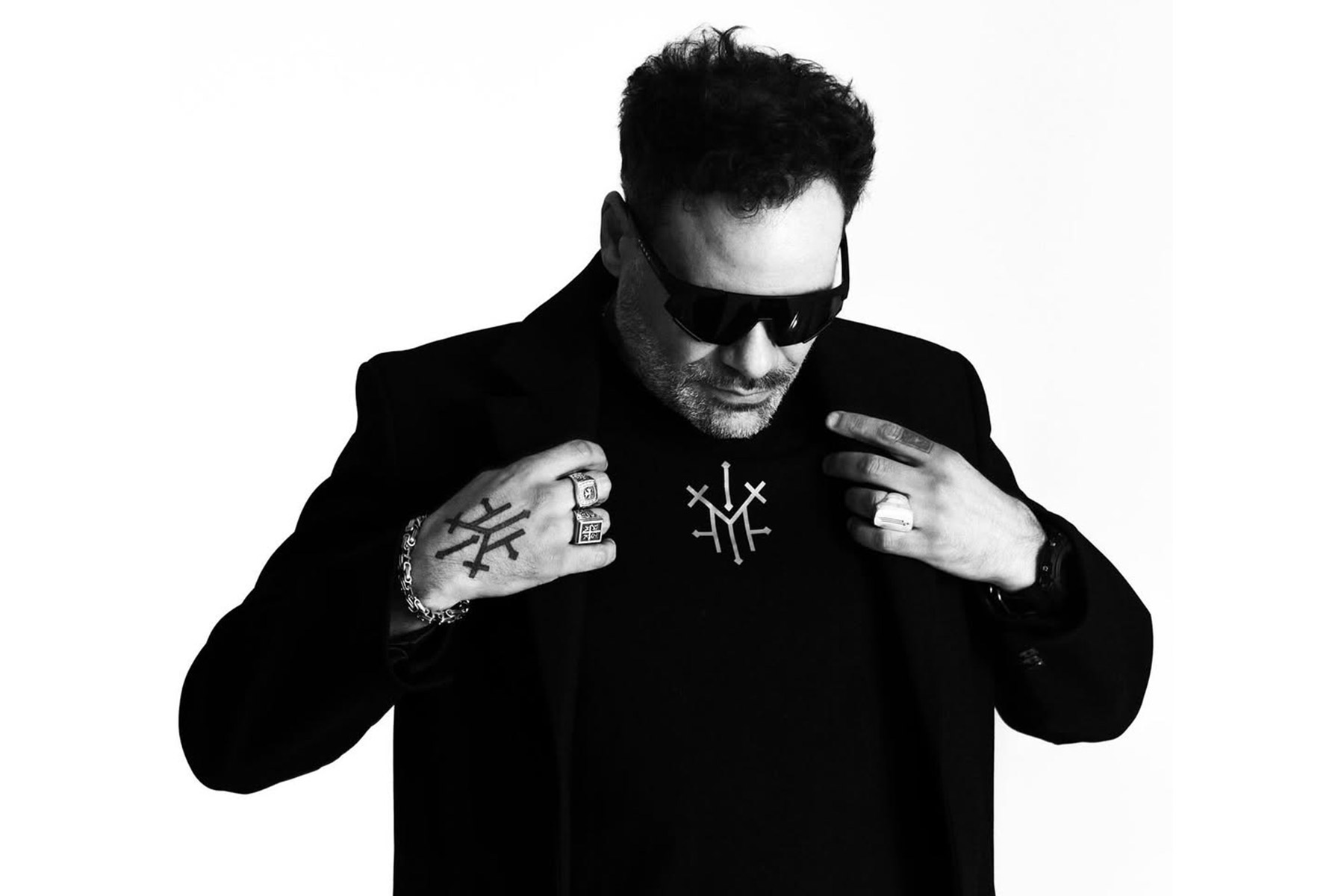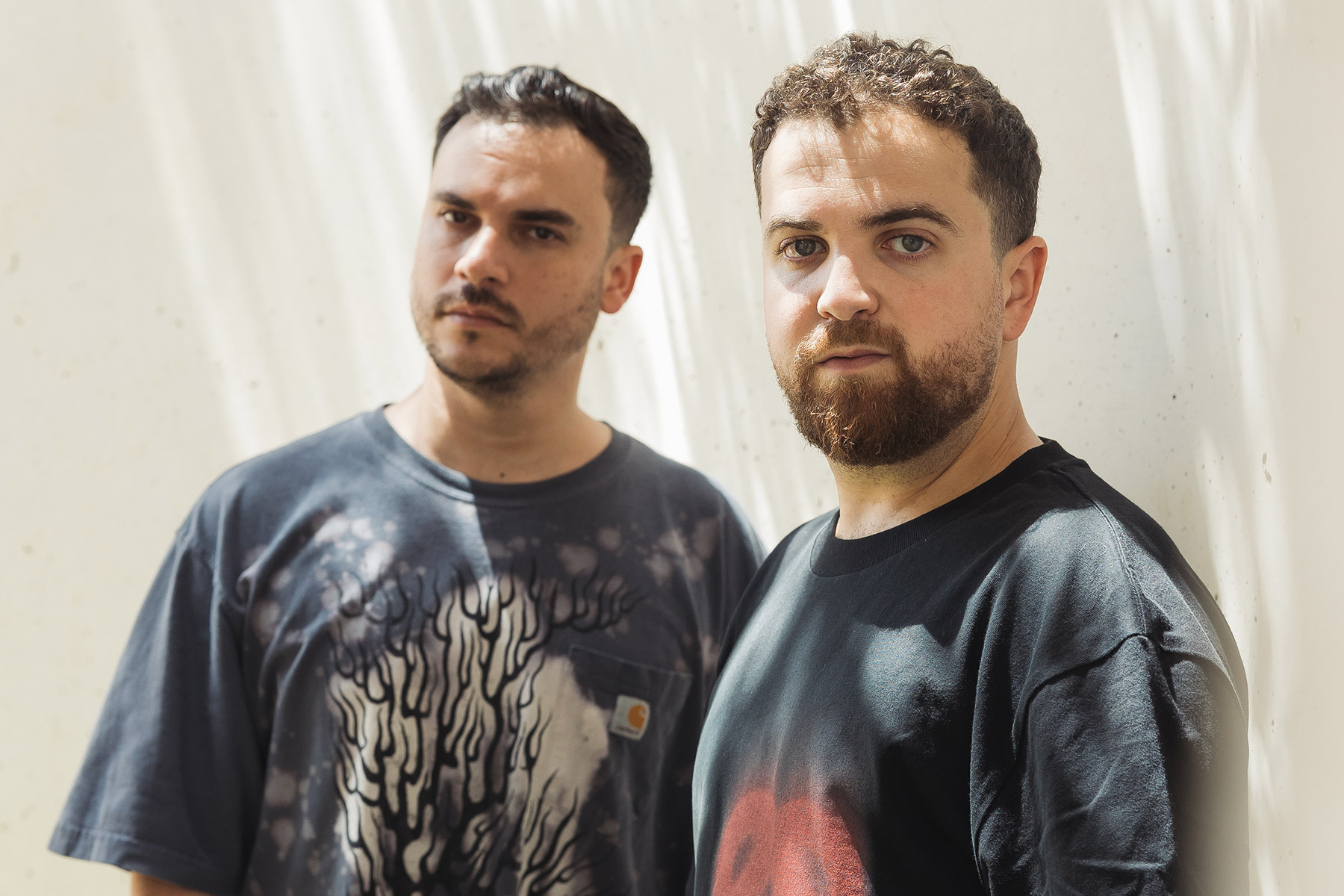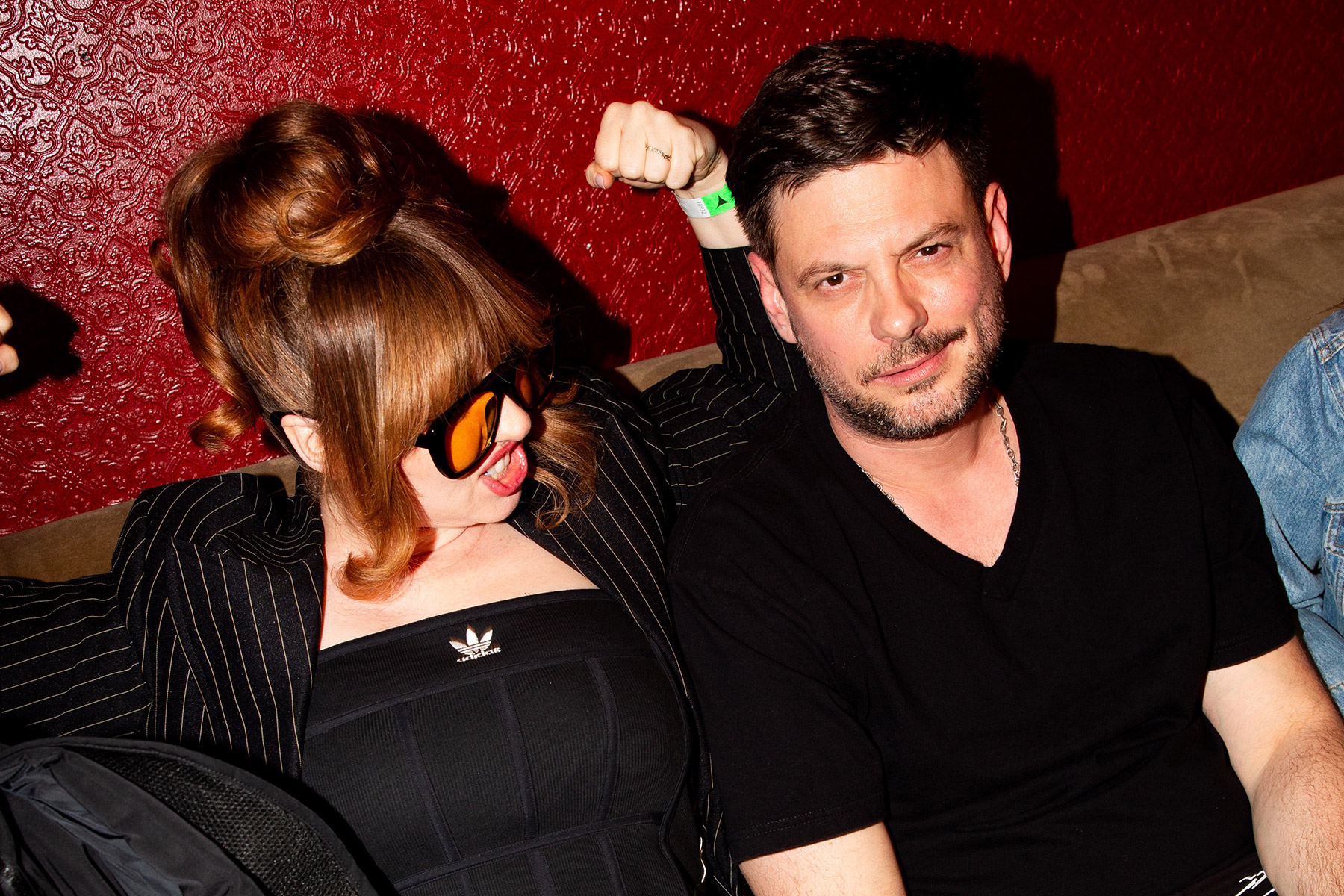Photo Credit: Luke Dyson
Since the formation of Innervisions in 2005, the Berlin-based label has honored its listeners with unique sounds often accompanied by live sets that include more contemporary instruments. The ethos of the brand and the name “reflects the intuitive push toward certain ideas. The name was chosen out of the belief that all art forms, not just music, are a materialized sphere of ideas. The encounter with such a materialized sphere of ideas in a book, an exhibition or a track triggers certain sensations and sensibilities”. On September 21st, 2018, the illustrious collective, which headlined Âme and Dixon, put forth a show at the magnificent Royal Albert Hall in London.
The venue has been recognized as a classical venue for 147 years and fills the place with layers of over 5000 purple velveted seats. At first, the crowd was notably apprehensive of how the night would ensue, young men and women dressed in black flowed through the halls, distinctly chatting with so many questions – How will the sound be? How will the production transpire? Will there be a DJ set? And to the more important questions, with only a small dancing platform in the middle, how are we all going to dance?!
As their mission to honor, celebrate and cultivate audio-visual artforms, it was a pleasant surprise to witness the opening act, Hana Erdman from Germany and Nina Kurtela from Croatia, a dance duo who together choreographed a piece to one of Dixon’s selections. Erdman was projected on screen by a pre-recorded short clip taken over 365 days & multiple different countries which was all compacted into 48 minutes. The exact movements on screen were mirrored by Kurtela, who performed in perfect synchronicity to the moving backsplash and music.
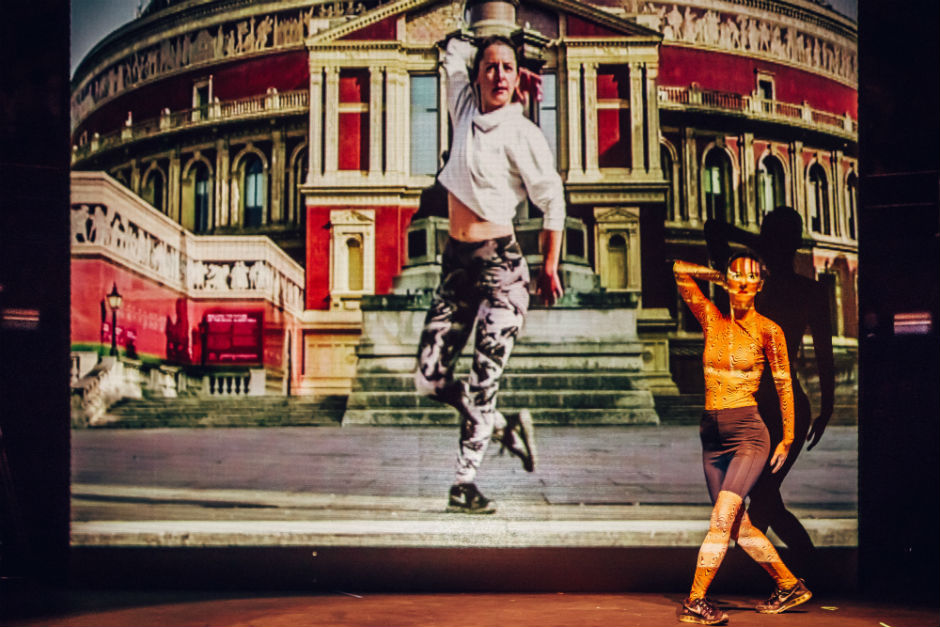
Although the venue was still surprisingly empty at this point, the next acts brought more energy into the room. Two grand pianos were wheeled on both sides of the stage whilst Henrik Schwarz and Bugge Wesseltoft got to their positions, calmly taking in the vast and majestic venue at the end of their noses. They played an hour of experimenting with synths and percussion, not structurally rhythmic per say, but the marriage of the electronic and classical set in such a terrain left the crowd wide-eyed and perhaps slightly bewildered.
The next acts, in no particular order, was followed by Kristian Beyer/Frank Wiedemann, Matthew Herbert, Marcus Worgull and Howling. By this point the crowd was bustling, venue at high capacity, beer flowing, hands in the air with fingers dancing accompanied by knees, feet and hips all bobbing around – the atmosphere was next to none. As the music got louder, the visuals became more complex, accompanied with light smoke behind the artists, too. They accompanied the technology with live vocalists – Herbert at Wiedemann (Âme’s lesser known alias), performing their new song ‘The Line’. Acoustically, the sounds bounced of happy faces well, which was a surprise as the space was so large. The vocals and individual sounds could be understood well enough that the crowd responded with screams and shouts when the first few chords of ‘Howling’ were played, one of the best-known classics from Innervisions.
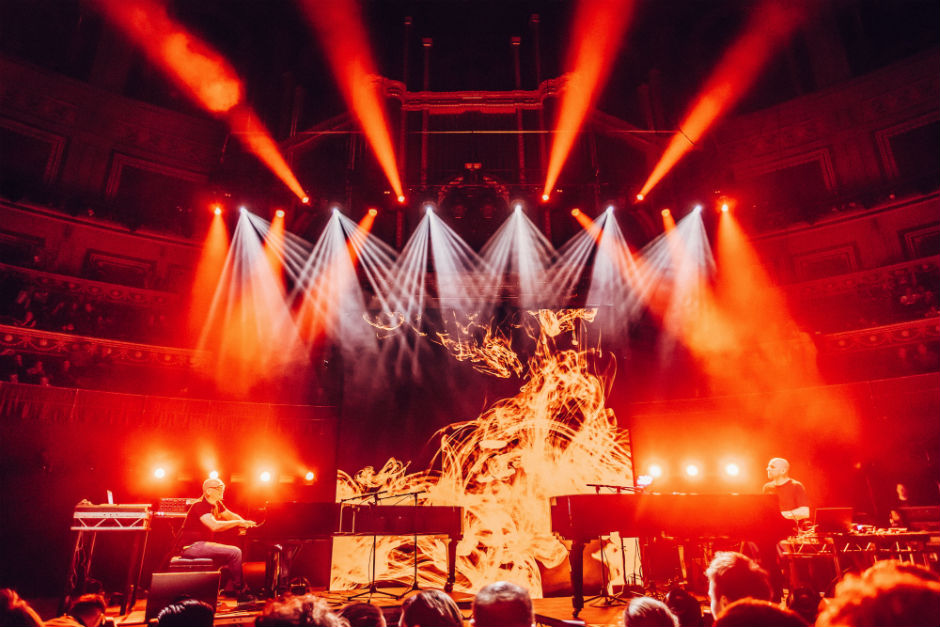
Although the majority of those participating were our typical 18-30 I spotted some much older people too, more my grandparents age. Keen to find out their vibe we got chatting and I learnt they’d had travelled all the way from Australia, at the age of 70, to see this exact show.
The DJ booth had been switched around and moved to floor height accompanied by a large rack of lights that had been placed closer towards the crowd. This created a space that seemed much smaller than reality, more of a club vibe. Their set was deep and perhaps less moody than what they would play in the club. The sound transpired well across the venue, with speakers set up throughout so all levels could hear well. The selection of music was a mixture of old and new, which helped the temperature pick up even more than it had before. This energized the crowd even more, giving them more power and stamina for the next venue they were playing in London that evening.
It’s an exciting time when the live music scene can bridge the divide between cross-genres, classical and electronic instruments, venues and artists, and even ages. Electronic Groove looks forward to seeing more of this within the next few years, Innervisions have pioneered this idea, but with such success it’s predicted that other labels will experiment like them too.
